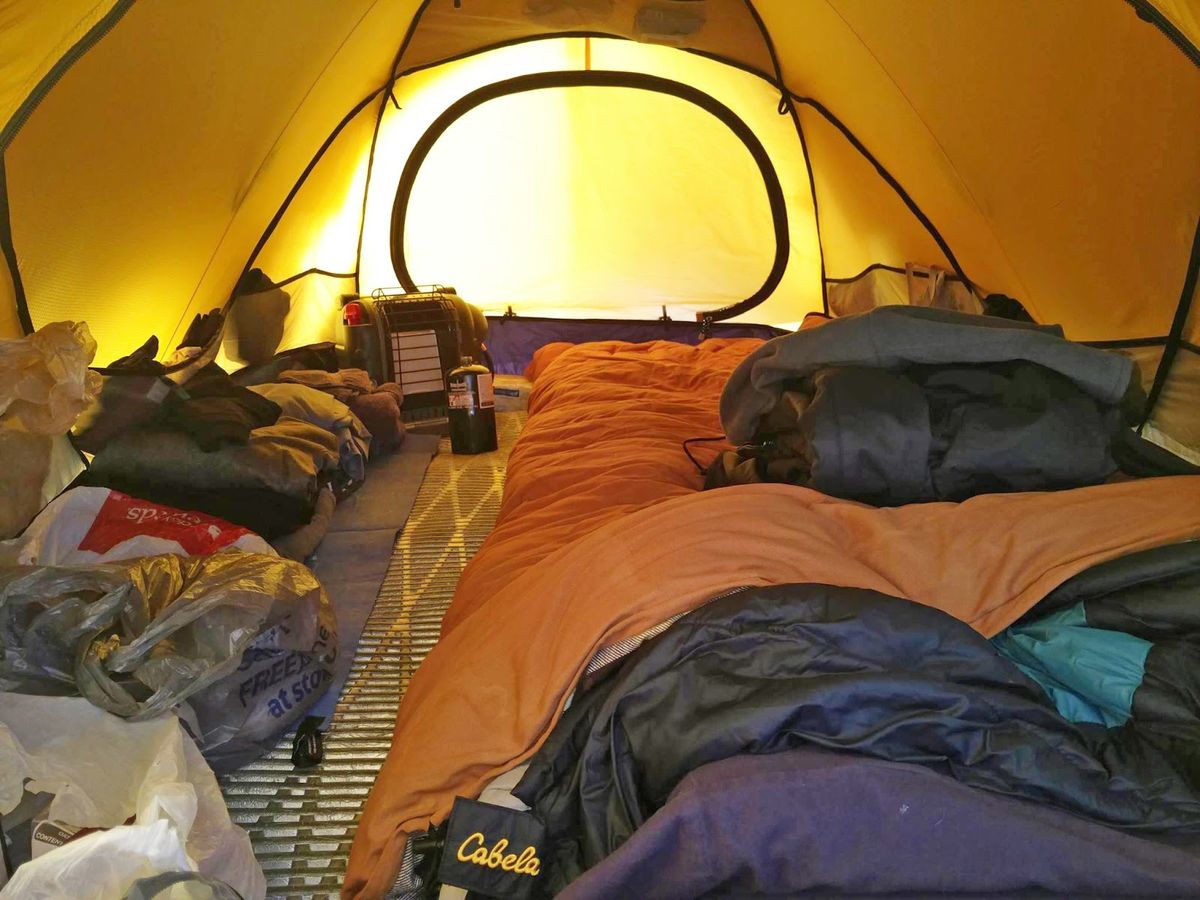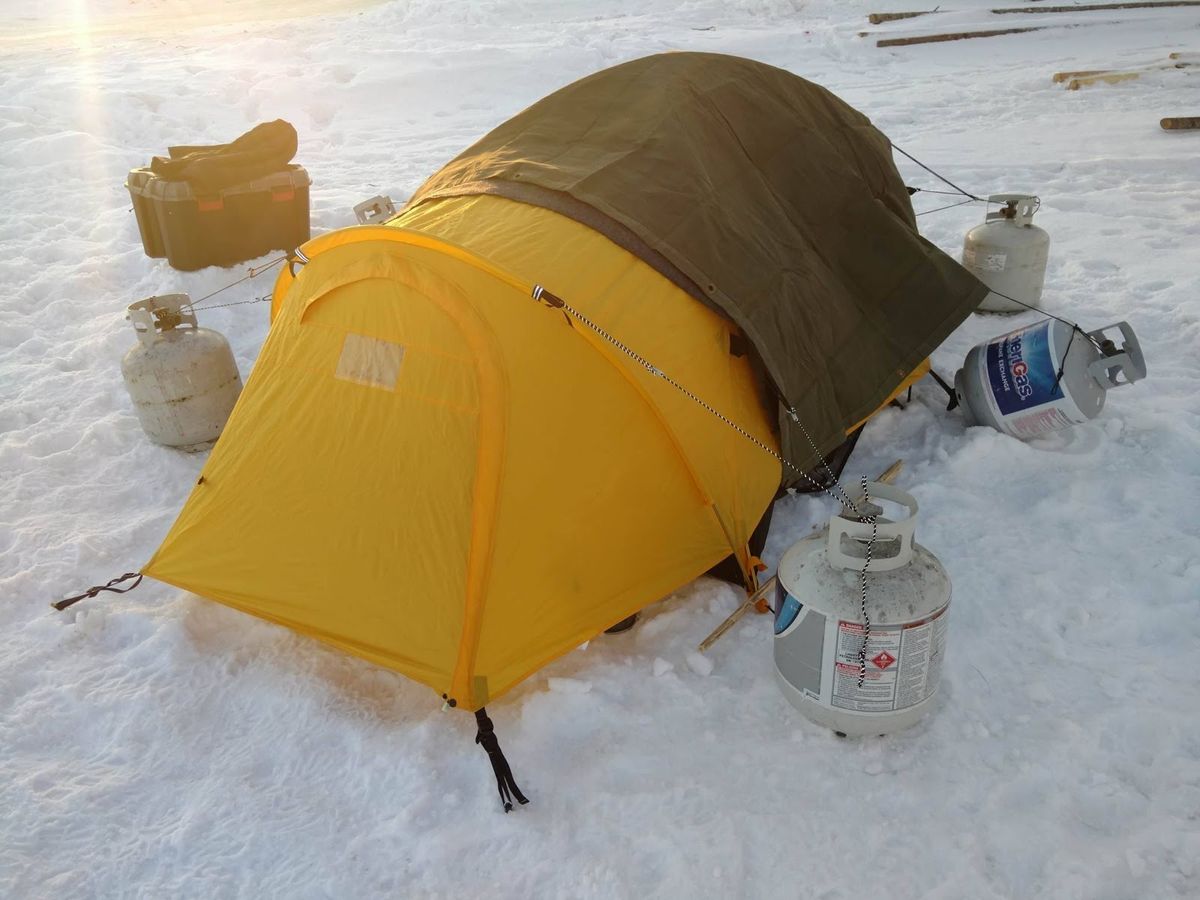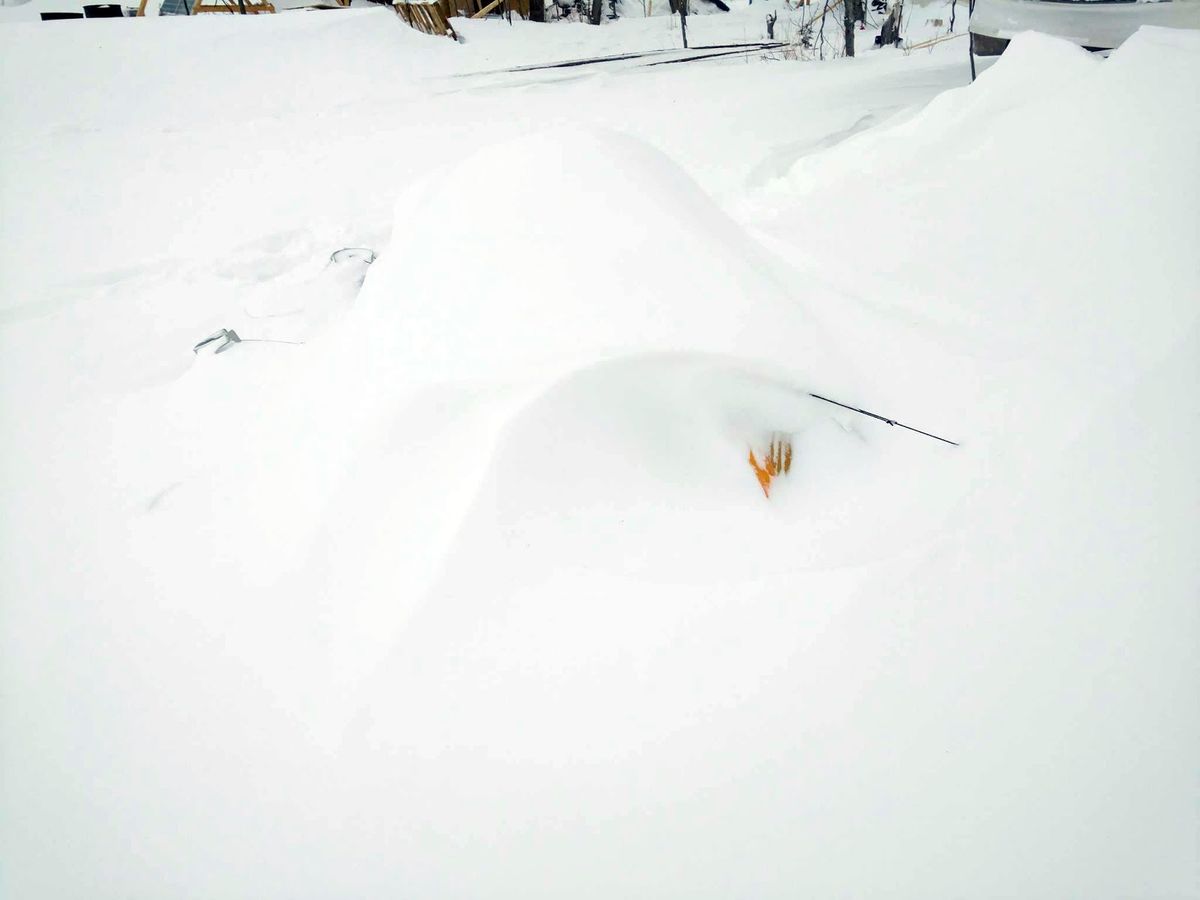I spent 10 days on the Standing Rock Indian Reservation, North Dakota, in late December 2016 caring for the people drawing attention to the construction of the the Dakota Access Pipeline. The challenge of providing medical assistance in a remote location with severe weather conditions was well-suited to my life experiences and skills as a paramedic. But my decision to participate in this medical mission was confusing to some friends and family and also controversial to others.
I went to the Standing Rock Indian Reservation after a lot of research and discussion with friends and family. I grew up in a small town in Alaska where I did not have running water for the first few years of my life. I worked at fire and EMS agencies with transport times of one to two hours or more. I also worked for the Alaska Interagency Wildland Fire Medic Program, which provided medical services on wildland fires, and I worked as a medic in the oil fields on the North Slope.
Living and working with limited modern resources and in extreme environments are not new experiences for me. Had I not had the experiences that I did I likely would not have gone to Standing Rock. Part of the reason I felt compelled to go is because I knew I had the experience and skills to tolerate the environment and treat the types of medical complaints that were likely to be common.
The Dakota Access Pipeline is a oil pipeline that is being constructed to transport crude oil from the Bakken fields in western North Dakota to refineries in southern Illinois. It travels along an existing pipeline route that would take it under Lake Oahe, near the current borders of the Standing Rock Indian Reservation. The Standing Rock Sioux Tribe has objected to the construction of the pipeline on the grounds of treaty violations, the presence of sacred sites and the potential for irreparable environmental damage. In April 2016, a member of the Standing Rock tribe set up a camp on the edge of the reservation closest to the pipeline’s planned route. People flocked to the camp to show solidarity with the Standing Rock tribe, and additional camps have been constructed in the area.
Legality of providing paramedic care
The legality of providing medical care in the camps was an issue that was raised multiple times when discussing the trip with friends. Because Native American reservations are considered sovereign nations, the tribal government is allowed to set their own rules for EMS licensure. Having a state license is not required unless the tribe chooses to require it. Part of the vetting process included submitting copies of my identification and national registry certification. I was also warned to make sure I brought a photo ID and my national registry card with me so that my identity could be verified once I arrived in camp.
I also made arrangements with my parents to bail me out of jail in the event that I was arrested. While I did not anticipate being arrested for being a caregiver, I wanted to make sure my bases were covered.
Volunteering for the Medic Healer Council
I’m a full-time college student and I knew that with the poor internet service in the camps I would not be able to go until winter break from classes, which would put me in camp over Christmas. I was OK with that since there would likely be people who would want to head home at least temporarily and so it would be a good time for me to provide reinforcement.
I submitted a volunteer application with the Standing Rock Medic Healer Council and was contacted by a volunteer coordinator who interviewed me and provided me with information about some of the cultural guidelines I would be expected to follow. I was asked to learn and follow the Seven Lakota Values of:
- Prayer
- Respect
- Compassion
- Honesty
- Generosity
- Humility
- Wisdom
I spoke with several people who had been in the camps, including other medical providers, about what to expect. I drew upon my Alaska work experience to know what to pack and also consulted with some of my more outdoorsy friends. Here is a list of the supplies I brought with me.
My idea was to plan for the worst case scenarios for traveling to Standing Rock and staying in camp. Even knowing that many supplies have been donated to the camps, I did not want to assume any items would be available for me to use.
I borrowed much of the equipment I took with me, which helped keep my costs down and allowed me to avoid buying gear that I would likely never use again since winter camping is not exactly something I planned on making a habit of. My packing list was nearly perfect. I used or gave away about 95 percent of the things I brought with me, while also not discovering anything I needed but didn’t bring.
Getting to Standing Rock
From my house to the camps is almost exactly 1,000 miles. I planned for two days to drive to North Dakota and three days to drive home. I planned for an extra day on the way home just in case I ran into bad weather I would have extra time to get back before I had to be in class and at work. My departure from Washington was delayed due to bad weather in Montana that closed the interstate, but once I got on the road the drive was fine and I arrived in North Dakota on Dec. 20, 2016. I spent the night in Bismarck before heading to camp the next morning, which was the first of my 10 days at Standing Rock.
Arriving in camp
I checked into camp on the morning of Dec. 21, 2016 and attended an orientation to camp life that covered everything from how to use the composting toilets to how to dress appropriately when attending a sweat lodge. After orientation I was directed to one of the other camps on the reservation that was in need of additional staff. I was warmly greeted by the people working in the medical yurt who were happy to have the additional help.
Providing medical care
The main medical team for the camp I was in consisted of an RN and apprentice herbalist, both of whom had been onsite for a couple of months. There was also another RN who was spending a couple of weeks at the camp and a resident physician was shared with the other camps.
Providing medical care in an environment like the camps at Standing Rock is dissimilar to providing medical care on an ambulance. Much of it falls into the primary care category; with things like sprains, strains, colds and coughs. Burns and respiratory issues were two of the most common chief complaints, which was exactly what I was expecting after working in the wildland fire camps in Alaska. We were able to treat the majority of the medical complaints on site and when necessary we would refer people to a clinic or hospital in Bismarck. We provided integrated care, using both Western, or conventional medicine, and herbal medicine, and the medic yurt also served as a healing space for people who needed to talk or recuperate.
We always had to be prepared for any possible injuries from conflicts between the residents of the camps and law enforcement and the DAPL employees. This meant being prepared for patients with pepper spray exposure and inhalation, hypothermia and traumatic injuries.
One of the other responsibilities of the medics is sweeping the camps before every storm to make sure people are prepared and also sweeping the camps after the storms to make sure everyone made it through OK. The medics also help ensure the general health and safety of camp residents, such as making sure everyone had a carbon monoxide detector in their sleeping space.
Living in camp
Daily camp chores included making sure there was adequate firewood, boiling water and doing dishes, cleaning the medical space, and evaluating our inventory levels. The firewood situation was the most frustrating part of living in camp. Most of the wood that had been donated was either wet or green or both, which means that it did not burn very easily. On days when we had extra medical staff, I helped work on insulating and preparing a new, larger yurt that was going to be the new medical space.
Most of the nights I was in camp I slept in my tent.

Inside the tent. (Photo/Ann Marie Farina)
The heater I had was too powerful for the tent, so I only ran it briefly while getting ready for bed or when waking up in the morning. Even without a heater, I was able to sleep comfortably by putting my 20 F sleeping bag inside my 0 F sleeping bag. It was even warmer in the tent after the blizzard due to the snowpack.
The blizzard was one of the more intense things I experienced while at Standing Rock. On Dec. 25, we were hit with a blizzard that dropped 12-15 inches of snow in 24 hours and had wind gusts of up to 60 mph. Due to the wind, I couldn’t unzip my tent door without it becoming filled with snow, so I packed up my spare sleeping bag, my cooking equipment and my blizzard supplies and moved into one of the new yurts I had been helping insulate. I stayed there for two nights with the members of the yurt building crew.

Pre-blizzard. The propane canisters made excellent anchors. The canvas tarp was tied to itself with rope going under the tent. (Photo/Ann Marie Farina)

Post-blizzard. (Photo/Ann Marie Farina)
Our camp primarily used solar power for electricity, which was supplemented by generator use when there wasn’t enough sun. Many days we didn’t have to run the generator at all, which was great since many days the generator didn’t want to run (I’m probably being unfair to the generator here. It is a perfectly good machine. We just didn’t hit it off very well). There was a community center located in a large military tent where breakfast and dinner were served daily, and where elders would tell stories and there was almost nightly drumming and singing.
Gratitude
I’m glad that I went to Standing Rock and I wish I had been able to stay longer. I met many incredible people while I was there, from around the United States and also from Canada and overseas. A diverse number of languages and cultures were represented, with the one thing we all had in common was that we felt compelled to go to Standing Rock.
During my 10 days there, I saw the Northern Lights dance for the first time in 10 years. I fell asleep listening to drumming and singing and the owls and the coyotes. I now have a Cuban abuela and a Lakota unci (pronounced oon-chi) — grandmothers — who are two of the strongest (and most stubborn) women I have ever met.
Going to Standing Rock enabled me to get in touch with my roots as a paramedic. My experience was also a good reminder that there are many ways to help people as a paramedic that aren’t tied to working in a traditional EMS setting or working on an ambulance.













